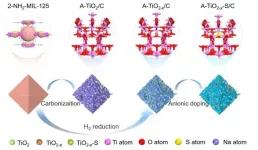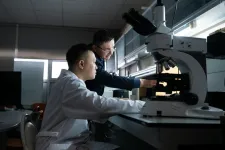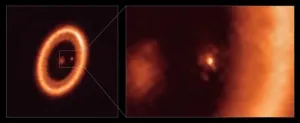(Press-News.org) Scientists have developed a 'nanobody' - a small fragment of a llama antibody - that is capable of chasing out human cytomegalovirus (HCMV) as it hides away from the immune system. This then enables immune cells to seek out and destroy this potentially deadly virus.
Around four out of five people in the UK are thought to be infected with HCMV, and in developing countries this can be as high as 95%. For the majority of people, the virus remains dormant, hidden away inside white blood cells, where it can remain undisturbed and undetected for decades. If the virus reactivates in a healthy individual, it does not usually cause symptoms. However, for people who are immunocompromised - for example, transplant recipients who need to take immunosuppressant drugs to prevent organ rejection - HCMV reactivation can be devastating.
At present, there is no effective vaccine against HCMV, and anti-viral drugs often prove ineffective or have very serious side-effects.
Now, in a study published in Nature Communications, researchers at Vrije Universiteit Amsterdam in the Netherlands and at the University of Cambridge have found a way to chase the virus from its hiding place using a special type of antibody known as a nanobody.
Nanobodies were first identified in camels and exist in all camelids - a family of animals that also includes dromedary, llamas and alpacas. Human antibodies consist of two heavy and two light chains of molecules, which together recognise and bind to markers on the surface of a cell or virus known as antigens. For this special class of camelid antibodies, however, only a single fragment of the antibody - often referred to as single domain antibody or nanobody - is sufficient to properly recognize antigens.
Dr Timo De Groof from Vrije Universiteit Amsterdam, the study's joint first author, said: "As the name suggests, nanobodies are much smaller than regular antibodies, which make them perfectly suited for particular types of antigens and relatively easy to manufacture and adjust. That's why they're being hailed as having the potential to revolutionise antibody therapies."
The first nanobody has been approved and introduced onto the market by biopharmaceutical company Ablynx, while other nanobodies are already in clinical trials for diseases like rheumatoid arthritis and certain cancers. Now, the team in The Netherlands and the UK have developed nanobodies that target a specific virus protein (US28), one of the few elements detectable on the surface of a HCMV latently infected cell and a main driver of this latent state.
Dr Ian Groves from the Department of Medicine at the University of Cambridge said: "Our team has shown that nanobodies derived from llamas have the potential to outwit human cytomegalovirus. This could be very important as the virus can cause life threating complications in people whose immune systems are not functioning properly."
In laboratory experiments using blood infected with the virus, the team showed that the nanobody binds to the US28 protein and interrupts the signals established through the protein that help keep the virus in its dormant state. Once this control is broken, the local immune cells are able to 'see' that the cell is infected, enabling the host's immune cells to hunt down and kill the virus, purging the latent reservoir and clearing the blood of the virus.
Dr Elizabeth Elder, joint first author, who carried out her work while at the University of Cambridge, said: "The beauty of this approach is that it reactivates the virus just enough to make it visible to the immune system, but not enough for it to do what a virus normally does - replicating and spreading. The virus is forced to put its head above the parapet where it can then be killed by the immune system."
Professor Martine Smit, also from from the Vrije Universiteit Amsterdam, added: "We believe our approach could lead to a much-needed new type of treatment for reducing - and potentially even preventing - CMV infectious in patients eligible for organ and stem cell transplants."
INFORMATION:
The research was funded by the Dutch Research Council (NWO), Wellcome and the Medical Research Council, with support from the NIHR Cambridge Biomedical Research Centre.
The research team of Prof. Xiaobo Ji and associate Prof. Guoqiang Zou has proposed an ingenious oxygen vacancy (OV)-engineering strategy to realize high content anionic doping in TiO2 and offered valuable insights into devise electrode materials with fast charge transfer kinetics in the bulk phase. The article titled "High content anion (S/Se/P) doping assisted by defect engineering with fast charge transfer kinetics for high-performance sodium ion capacitors" is published in Science Bulletin. Xinglan Deng is listed as first author and Prof. Guoqiang Zou as corresponding author.
The ...
An international research team has come up with an innovative method for metal recovery from industrial waste. The new method allows the simultaneous recovery of multiple metals from waste oxides in a single process. This novel route will lower the burden on waste storage facilities with significant contributions to the economic and environmental sustainability of industrial waste management. The study was published in Journal of Environmental Management. This work is the first in a series of studies aimed at developing cost-effective and environmentally sustainable solutions for industrial waste recycling.
Some of the major industries ...
Using the Atacama Large Millimetre/submillimeter Array (ALMA), in which the European Southern Observatory (ESO) is a partner, astronomers have unambiguously detected the presence of a disc around a planet outside our Solar System for the first time. The observations will shed new light on how moons and planets form in young stellar systems.
"Our work presents a clear detection of a disc in which satellites could be forming," says Myriam Benisty, a researcher at the University of Grenoble, France, and at the University of Chile, who led the new research published today in The Astrophysical Journal Letters. "Our ALMA observations were obtained at such exquisite resolution that we could clearly identify ...
Cambridge, MA ¬- Astronomers at the Center for Astrophysics | Harvard & Smithsonian have helped detect the clear presence of a moon-forming region around an exoplanet -- a planet outside of our Solar System. The new observations, published Thursday in The Astrophysical Journal Letters, may shed light on how moons and planets form in young stellar systems.
The detected region is known as a circumplanetary disk, a ring-shaped area surrounding a planet where moons and other satellites may form. The observed disk surrounds exoplanet PDS 70c, one of two giant, Jupiter-like planets orbiting a star nearly 400 light-years away. Astronomers had found hints of a "moon-forming" disk around this exoplanet before but since ...
Participation in elite adult rugby may be associated with changes in brain structure.
This is the finding of a study of 44 elite rugby players, almost half of whom had recently sustained a mild head injury while playing.
The study, part of the Drake Rugby Biomarker Study, was led by Imperial College London and published in the journal Brain Communications.
The research found a significant proportion of the rugby players had signs of abnormalities to the white matter, in addition to abnormal changes in white matter volume over time.
White matter is the 'wiring' of the brain, and helps brain cells communicate with each other. The research team say more work is now needed to investigate the long-term effects of professional rugby on brain health.
Professor David Sharp, senior author ...
Adults and children with COVID-19 who have a history of malnutrition may have an increased likelihood of death and the need for mechanical ventilation, according to a study published in Scientific Reports.
Malnutrition hampers the proper functioning of the immune system and is known to increase the risk of severe infections for other viruses, but the potential long-term effects of malnutrition on COVID-19 outcomes are less clear.
Louis Ehwerhemuepha and colleagues investigated associations between malnutrition diagnoses and subsequent COVID-19 severity, using medical records for 8,604 children and 94,495 adults (older than 18 years) who were hospitalised with COVID-19 in the United States between March and June 2020. Patients with a diagnosis ...
A new study published online today in the Journal of the National Cancer Institute reports that one third of the most popular cancer treatment articles on social media contain misinformation. Further, the vast majority of that misinformation has the potential to harm cancer patients by supporting approaches that could negatively impact the quality of their treatment and chances for survival. The study also showed that articles containing misinformation garner more attention and engagement than articles with evidence-based information.
The internet is a major source for health information, and misinformation is growing among many types of health conditions. This is an urgent challenge because it can result in patients making ...
Levels of omega-3 fatty acids in the blood are as good a predictor of mortality from any cause as smoking, according to a study involving the Hospital del Mar Medical Research Institute (IMIM), in collaboration with The Fatty Acid Research Institute in the United States and several universities in the United States and Canada. The study, published in The American Journal of Clinical Nutrition, used data from a long-term study group, the Framingham Offspring Cohort, which has been monitoring residents of this Massachusetts town, in the United States, since 1971.
Researchers have found that omega-3 levels in blood erythrocytes (the so-called red blood cells) are very good mortality risk predictors. The study concludes that "Having higher levels of these ...
Some antibiotics appear to be effective against a form of skin cancer known as melanoma. Researchers at KU Leuven, Belgium, examined the effect of these antibiotics on patient-derived tumours in mice. Their findings were published in the Journal of Experimental Medicine.
Researchers from KU Leuven may have found a new weapon in the fight against melanoma: antibiotics that target the 'power plants' of cancer cells. These antibiotics exploit a vulnerability that arises in tumour cells when they try to survive cancer therapy.
"As the cancer evolves, some melanoma cells may escape the treatment and stop proliferating to 'hide' from ...
An international collaborative study led by University of Helsinki has conducted a holistic study to investigate the effects of COVID-19 restrictions on several air quality pollutants for the Po Valley region in northern Italy. The area is well known to have one of the worst air quality standards in Europe and is highly influenced by anthropogenic (human-led) activities. The study was done between research groups in Finland, Italy and Switzerland and the results were published in the journal Environmental Science: Atmospheres.
Scientists have combined air quality measurements and computer simulation data over several locations in the region. The resulting studies show that reduced emissions from traffic lead to a strong reduction of nitrogen ...




